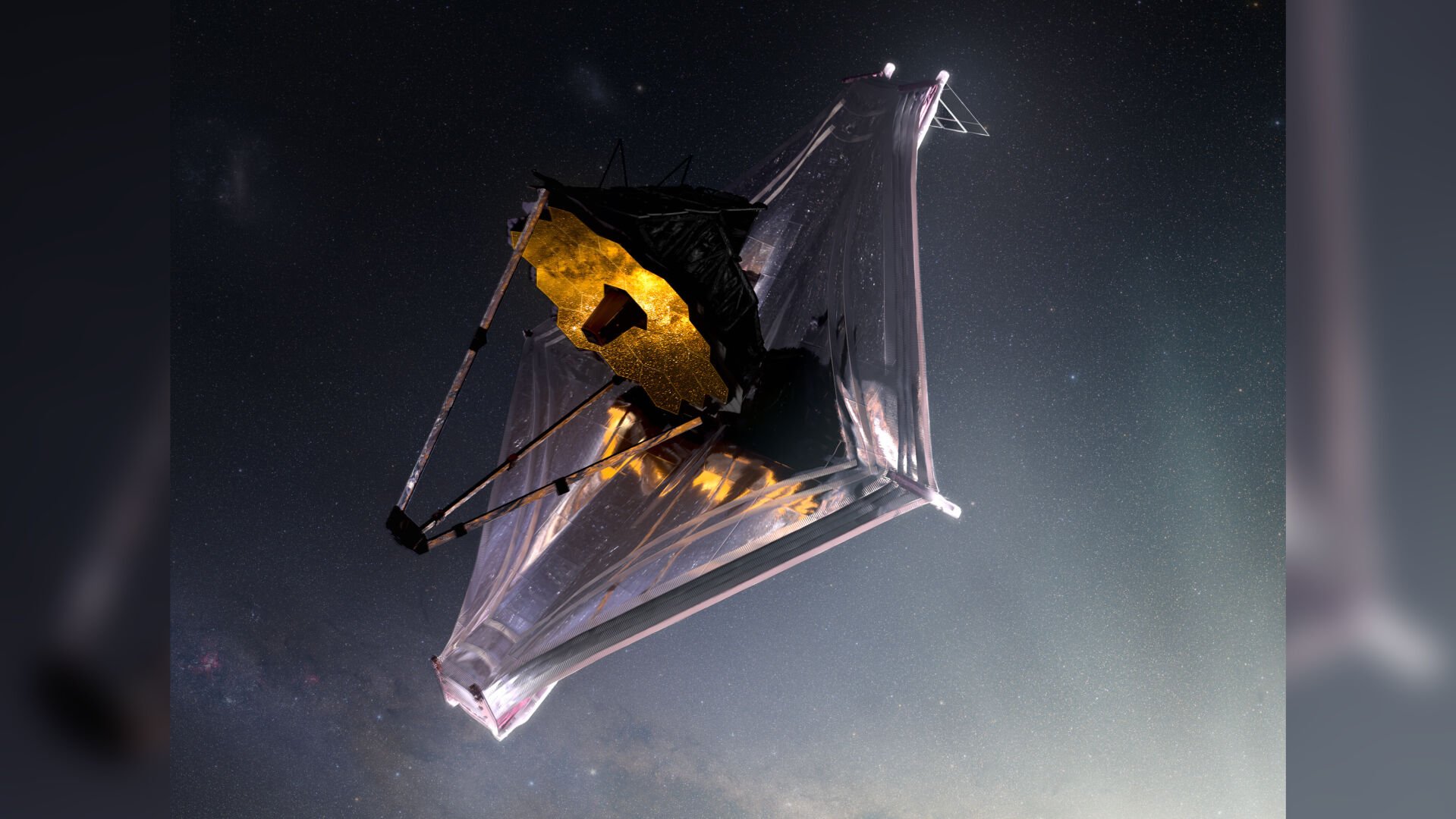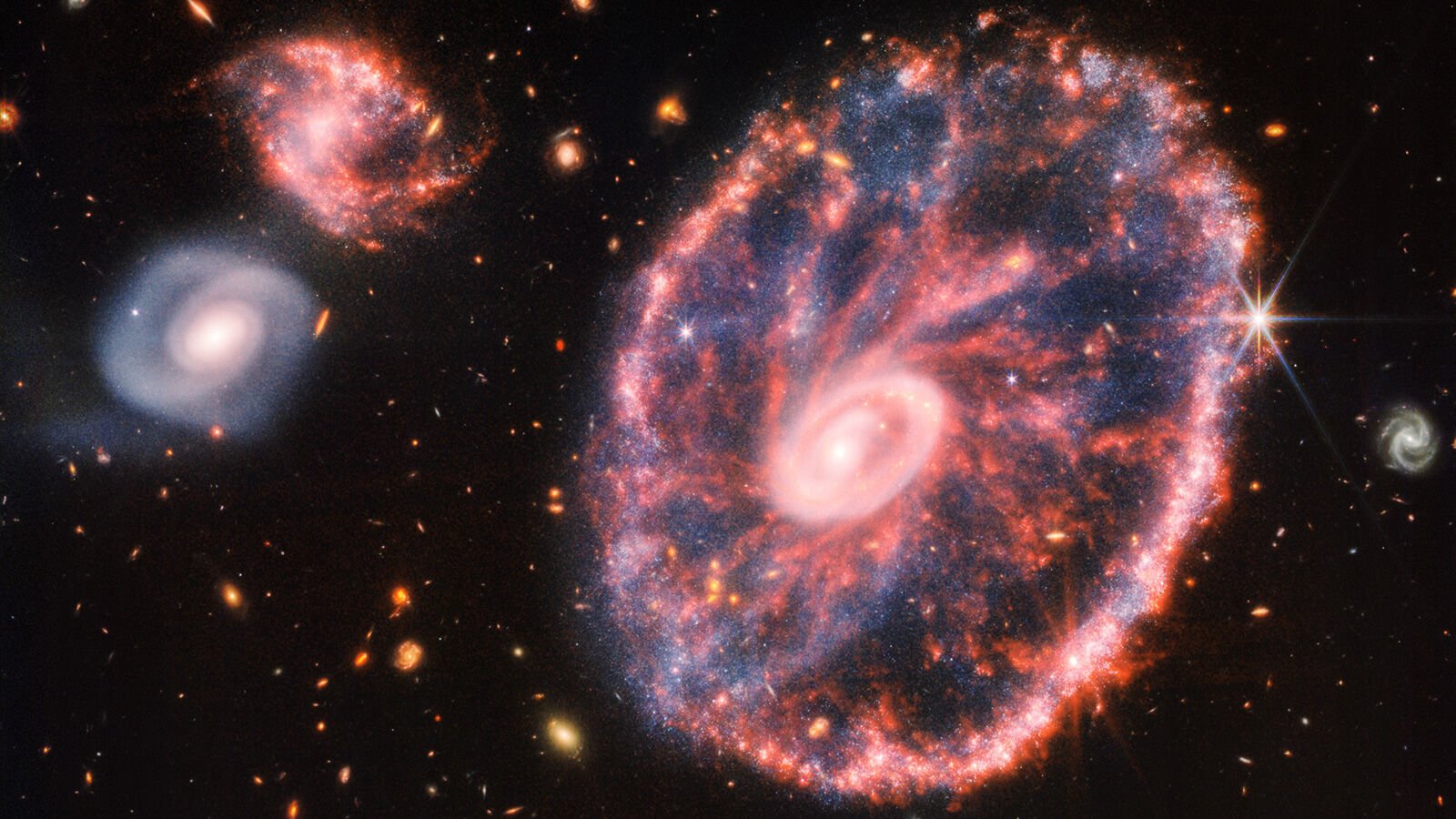A French scientist has apologized after tweeting a photo of a slice of chorizo, claiming it was an image of a distant star taken by the James Webb Space Telescope.
Étienne Klein, a celebrated physicist and director at France’s Alternative Energies and Atomic Energy Commission, shared the image of the spicy Spanish sausage on Twitter last week, praising the “level of detail” it provided.
“Picture of Proxima Centauri, the nearest star to the Sun, located 4.2 light years away from us. It was taken by the James Webb Space Telescope. This level of detail… A new world is unveiled everyday,” he told his more than 91,000 followers on Sunday.
The post was retweeted and commented upon by thousands of users, who took the scientist by his word.
Things, however, were not quite as they seemed.

Adriana Manrique Gutierrez/CIL/GSFC/NASA
Seen here is an artist's conception of the James Webb Space Telescope.
Klein admitted later in a series of follow-up tweets that the image was, in fact, a close-up of a slice of chorizo taken against a black background.
“Well, when it’s cocktail hour, cognitive bias seem to find plenty to enjoy… Beware of it. According to contemporary cosmology, no object related to Spanish charcuterie exists anywhere else other than on Earth”
After facing a backlash from members of the online community for the prank, he wrote: “In view of certain comments, I feel obliged to specify that this tweet showing an alleged picture of Proxima Centauri was a joke. Let’s learn to be wary of the arguments from positions of authority as much as the spontaneous eloquence of certain images.”
On Wednesday, Klein apologized for the hoax, saying his intention was “to urge caution regarding images that seem to speak for themselves.”
In a bid to make amends, he posted an image of the spectacular Cartwheel galaxy, assuring followers that this time the photo was genuine.

NASA/ESA/CSA/STScI
This new image from the James Webb Space Telescope shows the Cartwheel Galaxy, the result of a high-speed collision that occurred about 440 million years ago, along with two neighboring galaxies.
The Webb telescope, the most powerful telescope ever launched into space, officially began scientific operations on July 12. It will be able to peer inside the atmospheres of exoplanets and observe some of the first galaxies created after the universe began by viewing them through infrared light, which is invisible to the human eye.
-
James Webb telescope shows it’s possible to seek alien life in distant planets’ atmospheres
NASA/ESA/CSA/STScI via AP
This image provided by NASA on Monday, July 11, 2022, shows galaxy cluster SMACS 0723, captured by the James Webb Space Telescope. The telescope is designed to peer back so far that scientists can get a glimpse of the dawn of the universe about 13.7 billion years ago and zoom in on closer cosmic objects, even our own solar system, with sharper focus.
NASA/ESA/CSA/STScI via AP
This image provided by NASA on Monday, July 11, 2022, shows galaxy cluster SMACS 0723, captured by the James Webb Space Telescope. The telescope is designed to peer back so far that scientists can get a glimpse of the dawn of the universe about 13.7 billion years ago and zoom in on closer cosmic objects, even our own solar system, with sharper focus.
-
James Webb telescope shows it’s possible to seek alien life in distant planets’ atmospheres
NASA, ESA, CSA, and STScI via AP
This combo of images provided by NASA on Tuesday, July 12, 2022, shows a side-by-side comparison of observations of the Southern Ring Nebula in near-infrared light, at left, and mid-infrared light, at right, from the Webb Telescope.
NASA, ESA, CSA, and STScI via AP
This combo of images provided by NASA on Tuesday, July 12, 2022, shows a side-by-side comparison of observations of the Southern Ring Nebula in near-infrared light, at left, and mid-infrared light, at right, from the Webb Telescope.
-
-
James Webb telescope shows it’s possible to seek alien life in distant planets’ atmospheres
NASA, ESA, CSA, STScI via AP
This image released by NASA on Tuesday, July 12, 2022, shows the bright star at the center of NGC 3132 for the first time in near-infrared light.
NASA, ESA, CSA, STScI via AP
This image released by NASA on Tuesday, July 12, 2022, shows the bright star at the center of NGC 3132 for the first time in near-infrared light.
-
James Webb telescope shows it’s possible to seek alien life in distant planets’ atmospheres
NASA, ESA, CSA, and STScI via AP
This image provided by NASA on Tuesday, July 12, 2022, shows Stephan's Quintet, a visual grouping of five galaxies, as observed from the Webb Telescope. This mosaic was constructed from almost 1,000 separate image files, according to NASA.
NASA, ESA, CSA, and STScI via AP
This image provided by NASA on Tuesday, July 12, 2022, shows Stephan's Quintet, a visual grouping of five galaxies, as observed from the Webb Telescope. This mosaic was constructed from almost 1,000 separate image files, according to NASA.
-
-
James Webb telescope shows it’s possible to seek alien life in distant planets’ atmospheres
NASA, ESA, CSA, and STScI via AP
This image provided by NASA on Tuesday, July 12, 2022, shows Stephan's Quintet, a visual grouping of five galaxies captured by the Webb Telescope's Mid-Infrared Instrument (MIRI).
NASA, ESA, CSA, and STScI via AP
This image provided by NASA on Tuesday, July 12, 2022, shows Stephan's Quintet, a visual grouping of five galaxies captured by the Webb Telescope's Mid-Infrared Instrument (MIRI).
-
James Webb telescope shows it’s possible to seek alien life in distant planets’ atmospheres
NASA, ESA, CSA, and STScI via AP
-
-
James Webb telescope shows it’s possible to seek alien life in distant planets’ atmospheres
NASA, ESA, CSA, and STScI via AP
This image released by NASA on Tuesday, July 12, 2022, shows the edge of a nearby, young, star-forming region NGC 3324 in the Carina Nebula. Captured in infrared light by the Near-Infrared Camera (NIRCam) on the James Webb Space Telescope, this image reveals previously obscured areas of star birth, according to NASA.
NASA, ESA, CSA, and STScI via AP
This image released by NASA on Tuesday, July 12, 2022, shows the edge of a nearby, young, star-forming region NGC 3324 in the Carina Nebula. Captured in infrared light by the Near-Infrared Camera (NIRCam) on the James Webb Space Telescope, this image reveals previously obscured areas of star birth, according to NASA.
-
James Webb telescope shows it’s possible to seek alien life in distant planets’ atmospheres
NASA, ESA, CSA, STScI via AP
This image released by NASA on Tuesday, July 12, 2022, combined the capabilities of the James Webb Space Telescope's two cameras to create a never-before-seen view of a star-forming region in the Carina Nebula. Captured in infrared light by the Near-Infrared Camera (NIRCam) and Mid-Infrared Instrument (MIRI), this combined image reveals previously invisible areas of star birth.
NASA, ESA, CSA, STScI via AP
This image released by NASA on Tuesday, July 12, 2022, combined the capabilities of the James Webb Space Telescope's two cameras to create a never-before-seen view of a star-forming region in the Carina Nebula. Captured in infrared light by the Near-Infrared Camera (NIRCam) and Mid-Infrared Instrument (MIRI), this combined image reveals previously invisible areas of star birth.


